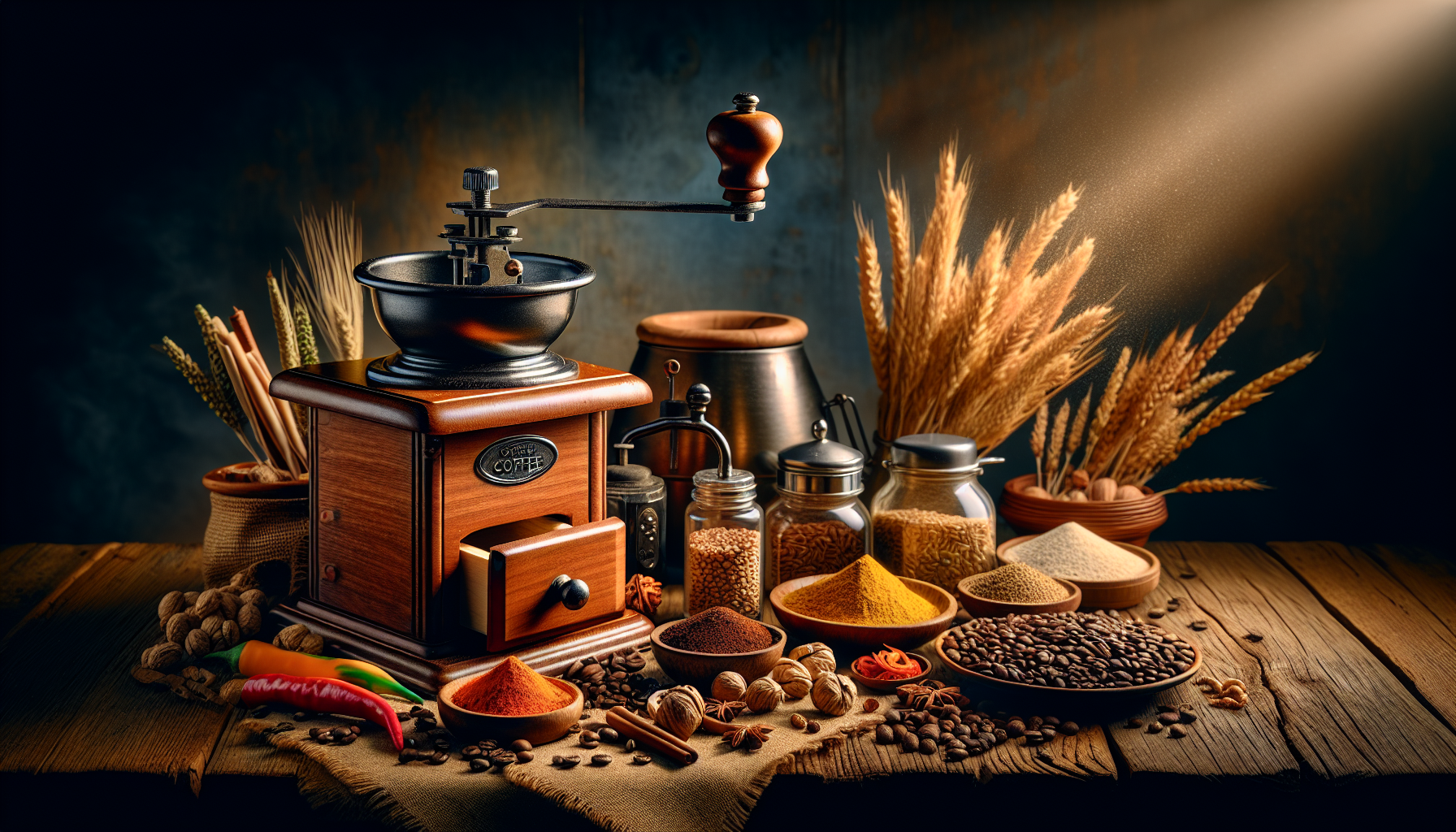
Imagine waking up in the morning to the enticing aroma of freshly ground coffee beans, filling your kitchen and awakening your senses. The coffee grinder, often underappreciated, is a culinary tool that has the power to elevate your kitchen arsenal to new heights. Not only does it provide the foundation for a perfect cup of joe, but it also opens up a world of culinary possibilities. From grinding spices to creating flavorful rubs, the humble coffee grinder is a versatile and essential addition to any kitchen. Discover how this unassuming tool can enhance your culinary creations and take your kitchen skills to the next level.
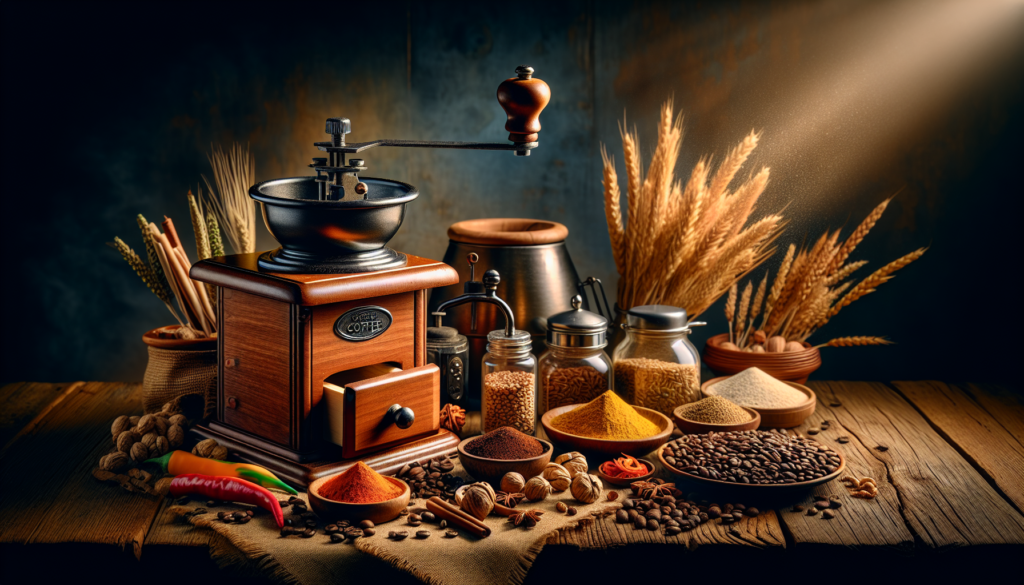
Benefits of Using a Coffee Grinder for Culinary Purposes
Freshness and Flavor
One of the primary benefits of using a coffee grinder for culinary purposes is the ability to enjoy the freshest flavors possible. When you grind coffee beans, the essential oils and aromatic compounds are released, providing you with a rich and flavorful cup of coffee. The same principle applies to other culinary ingredients. By grinding your spices, nuts, herbs, and flavored salts and sugars, you can unlock their full potential and enhance the taste and aroma of your dishes.
Versatility
Another advantage of using a coffee grinder in the kitchen is its versatility. While its main purpose may be grinding coffee beans, it can also be used to grind a wide array of ingredients. Whether you need finely ground spices, coarse nuts, or crushed herbs, a coffee grinder can handle it all. This versatility makes it a valuable tool for any home cook or professional chef looking to bring out the best in their culinary creations.
Cost-Effective
Investing in a coffee grinder for culinary purposes can also be cost-effective in the long run. Pre-ground spices, nuts, and herbs are often more expensive than buying the whole ingredients and grinding them yourself. By purchasing whole ingredients and grinding them as needed, you can save money and ensure that you always have fresh ingredients on hand. Additionally, a good-quality coffee grinder is a one-time investment that will last for years, providing you with a cost-effective solution for grinding various culinary ingredients.
Different Types of Coffee Grinders
When it comes to coffee grinders, there are two main types: blade grinders and burr grinders.
Blade Grinders
blade grinders are the most common and affordable type of coffee grinder. They feature a spinning blade that chops the coffee beans into smaller particles. While blade grinders are suitable for grinding coffee beans, they may not produce consistent results for other culinary ingredients. They can also generate heat, which can affect the flavor of the ingredients. However, if you’re on a tight budget and primarily plan to use the grinder for coffee, a blade grinder can still be a decent option.
Burr Grinders
burr grinders, on the other hand, are considered the superior choice when it comes to grinding culinary ingredients. They use two burrs – one stationary and one rotating – to crush the coffee beans or other ingredients between them. This produces a consistent and uniform grind size, which is crucial for achieving the desired taste and texture in your dishes. Burr grinders also allow you to adjust the grind size, giving you more control over your culinary creations. While they may be more expensive than blade grinders, the quality and versatility they offer make them a worthwhile investment for serious home cooks and professionals.
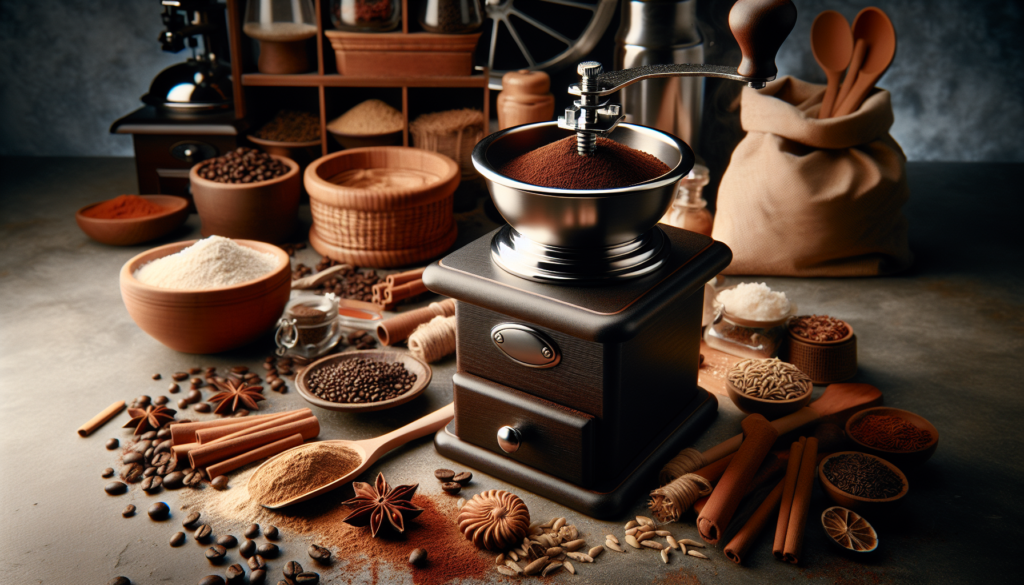
Factors to Consider When Choosing a Coffee Grinder
Grinder Size and Capacity
When choosing a coffee grinder for culinary purposes, it’s important to consider the grinder’s size and capacity. If you have limited counter space or plan to use the grinder for small quantities, a compact grinder with a smaller capacity may be sufficient. However, if you frequently grind large quantities of ingredients or have ample counter space, a larger grinder with a higher capacity may be more suitable.
Grind Settings and Consistency
The grind settings and consistency offered by the coffee grinder are crucial factors to consider. Burr grinders typically provide more grind settings, allowing you to choose from different options such as fine, medium, or coarse. This flexibility is essential as it enables you to achieve the perfect grind size for different culinary applications. Additionally, ensure that the grinder produces consistent results to avoid any variations in flavor and texture.
Quality and Durability
Investing in a high-quality coffee grinder is important for its longevity and performance. Look for grinders made with durable materials, such as stainless steel or ceramic, which can withstand regular use and resist wear and tear. Additionally, read reviews and consider reputable brands known for their reliable and well-built coffee grinders. A durable and reliable grinder will not only ensure consistent results but also save you money in the long run by avoiding frequent replacements.
Grinding Techniques for Culinary Applications
grinding techniques may vary depending on the specific ingredient you’re working with. Here are some general guidelines for grinding various culinary ingredients:
Spices
When grinding spices, it’s best to start with whole spices to preserve their flavor and aroma. Simply add the spices to the coffee grinder and pulse until you achieve the desired consistency. For finer spices, such as cinnamon or nutmeg, you may need to grind them for a longer duration.
Nuts and Seeds
For nuts and seeds, it’s important to consider the desired texture. If you’re looking for a coarser grind, pulse the grinder a few times until you achieve the desired consistency. For a finer grind, continue grinding until the nuts or seeds reach the desired texture. It’s important to be attentive while grinding nuts and seeds to avoid turning them into a paste.
Herbs
When grinding herbs, it’s best to remove the stems and leaves from the woody stems. Add the herbs to the coffee grinder and pulse a few times until they are finely chopped. Be mindful not to overgrind the herbs, as they can quickly turn into a paste.
Flavored Salts and Sugars
Grinding flavored salts and sugars is a great way to enhance their flavor and incorporate them into various dishes. Simply add the flavored salts or sugars to the grinder and pulse until they reach the desired consistency. Be sure to clean the grinder thoroughly after grinding flavored salts to prevent any cross-contamination of flavors.
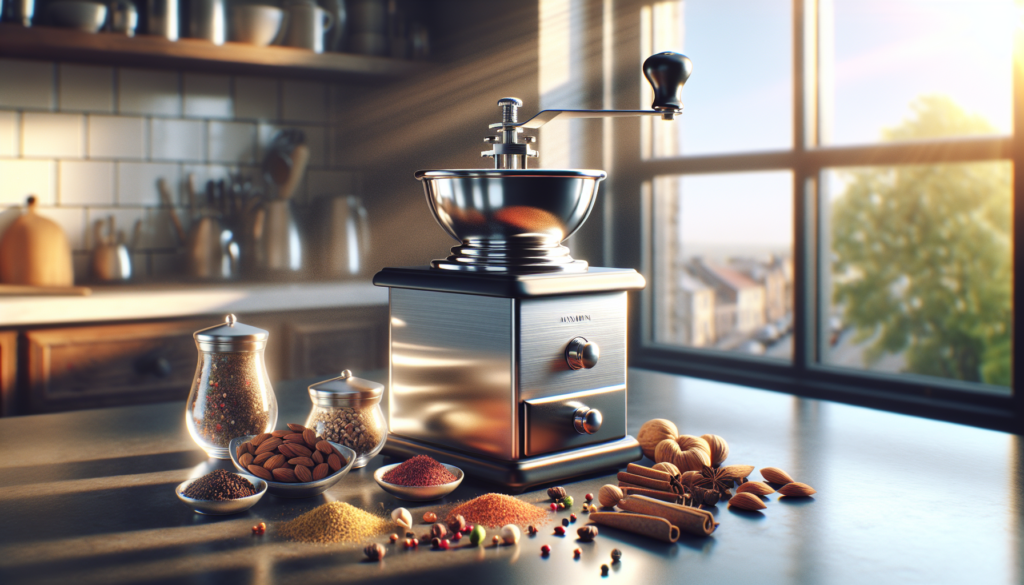
Using a Coffee Grinder for Spices
Grinding spices with a coffee grinder can significantly elevate the flavors of your dishes. Whether you’re making a curry, marinade, or spice rub, freshly ground spices can take your culinary creations to the next level. By grinding your own spices, you have better control over the grind size, ensuring that you achieve the perfect balance of flavors in your dishes.
Using a Coffee Grinder for Nuts and Seeds
A coffee grinder can also be a handy tool for grinding nuts and seeds. Whether you need crushed almonds for baking or ground flaxseeds for smoothies, a coffee grinder can do the job efficiently. In addition to grinding, a coffee grinder can also help release the natural oils in nuts and seeds, enhancing their flavors and nutritional value.
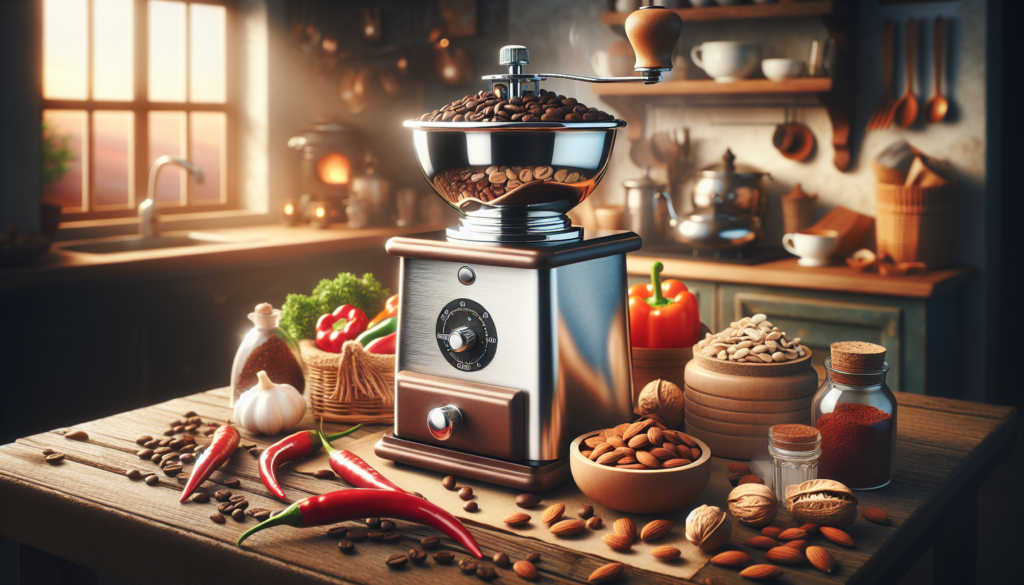
Using a Coffee Grinder for Herbs
Freshly ground herbs can add depth and complexity to your dishes. By using a coffee grinder to grind herbs, you can release their aromatic compounds and infuse your recipes with a burst of freshness. Whether you’re creating a homemade herb blend or need finely chopped herbs for a sauce or garnish, a coffee grinder can make the process quick and easy.
Using a Coffee Grinder for Flavored Salts and Sugars
Grinding flavored salts and sugars in a coffee grinder allows you to incorporate their unique flavors into various dishes. Whether you’re making a salt crust for a roast or adding flavored sugar to your favorite dessert, a coffee grinder can help you achieve a consistent and uniform texture. Just be sure to clean the grinder thoroughly after grinding flavored salts to avoid any residual flavors in future uses.
Cleaning and Maintenance Tips for Coffee Grinders
Proper cleaning and maintenance are essential to ensure the longevity and performance of your coffee grinder. Here are some tips to keep in mind:
-
Regularly remove any leftover grounds or residue from the grinder to prevent the buildup of oils and flavors. Use a dry brush or cloth to wipe away any debris.
-
Once a month, deep clean the grinder by grinding a small amount of uncooked rice. This helps remove any lingering oils and residue.
-
For blade grinders, ensure the blades are sharp and not dull. Sharp blades will provide better and more consistent grinding results. If the blades become dull over time, consider replacing them.
-
For burr grinders, follow the manufacturer’s instructions for cleaning and maintenance. This may include disassembling the grinder for a thorough cleaning, removing any trapped particles, and lubricating the burrs if necessary.
-
Store your coffee grinder in a cool, dry place to avoid exposure to moisture and humidity, which can lead to damage or corrosion.
By following these cleaning and maintenance tips, you can ensure that your coffee grinder remains in optimal condition and continues to deliver exceptional grinding results.
The Future of Coffee Grinders in Culinary Arts
As the culinary world continues to evolve, coffee grinders are likely to play an increasingly important role in the kitchen. With advancements in technology, we can expect to see more innovative features and designs that cater specifically to culinary applications. From improved grind consistency to enhanced customization options, coffee grinders of the future will provide home cooks and professional chefs with even greater control and creativity in their culinary endeavors.
In conclusion, a coffee grinder is a versatile and valuable tool for any culinary enthusiast. From unlocking the freshest flavors to providing a range of grind settings, it offers numerous benefits for grinding various ingredients. By choosing the right type of grinder, considering important factors, and following proper grinding techniques, you can elevate your culinary creations and enhance your kitchen arsenal. So why settle for pre-ground spices, stale herbs, or store-bought ground nuts when you can experience the difference of freshly ground ingredients with the help of a coffee grinder? Happy grinding and happy cooking!